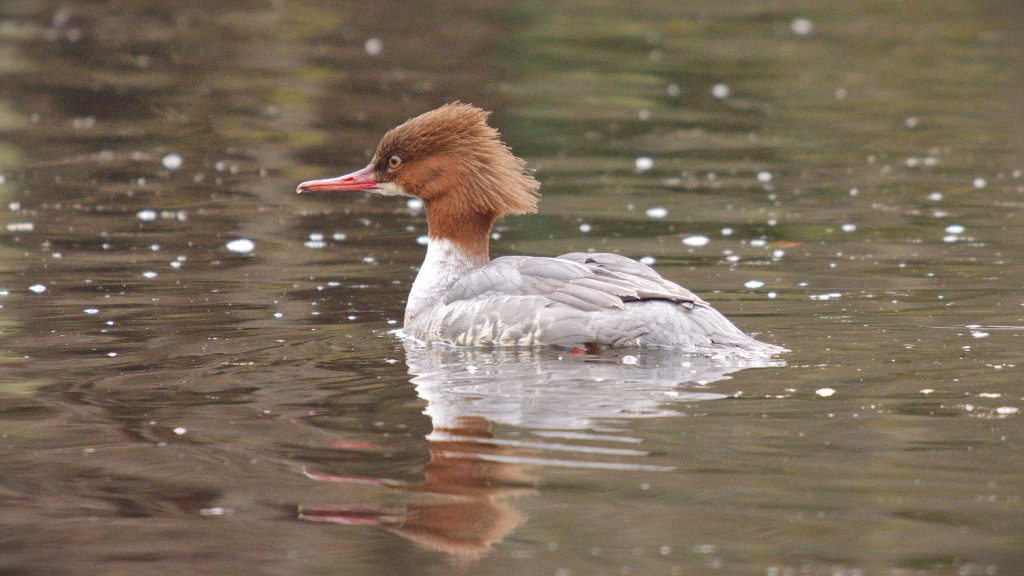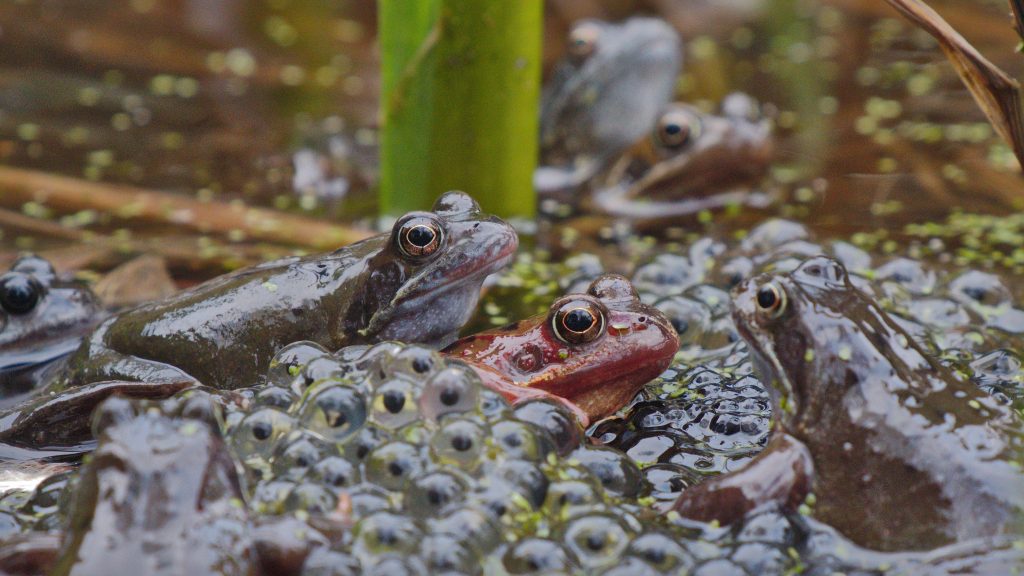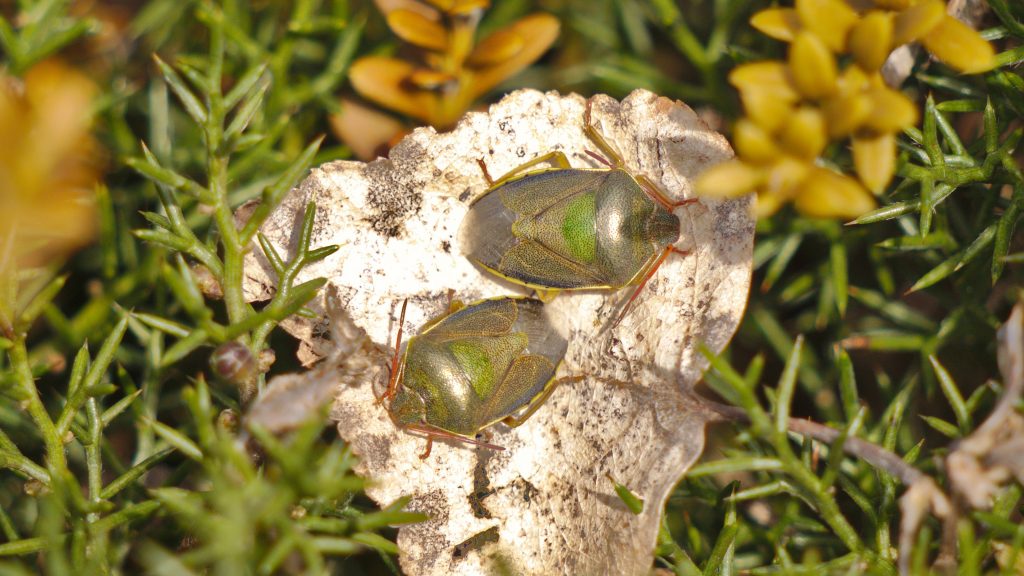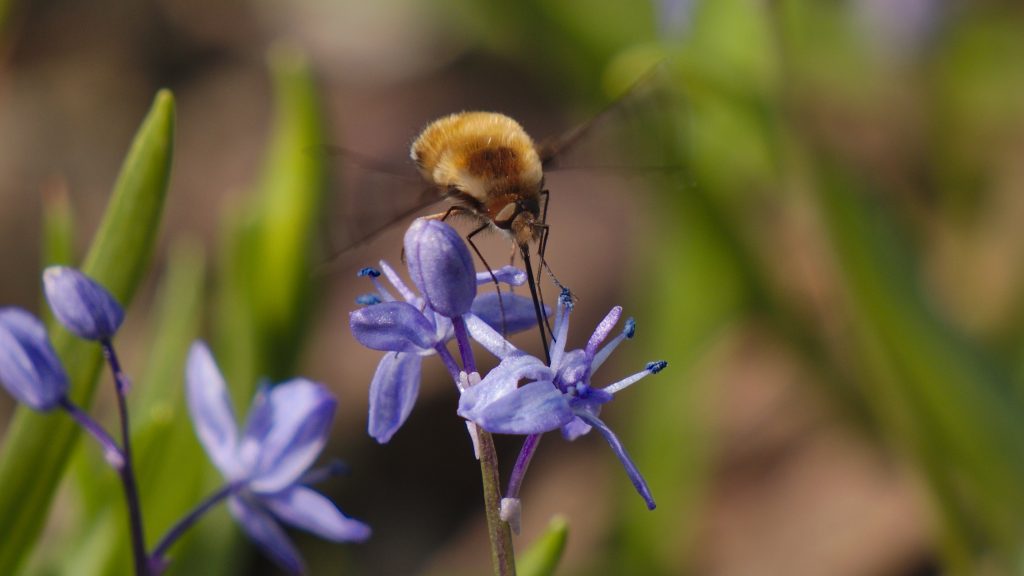
March 2019 continued the trend of above-average temperatures although it was a much more mixed month than February, with some sharp cold snaps and no exceptionally mild spells. The highest maximum temperature was 16.9°C and the lowest air minimum -2.5°C. Rainfall amounted to 80.0 mm, considerably more than January and February and 157% of the long-term average. Total sunshine was 134.0 hours, which despite all the rain was nevertheless 119% of the average. The Garden’s wildlife total remained unchanged at 1,081.
Birds: No fewer than 46 species of bird were recorded at RBGE during March. The second 2019 record of Peregrine was made on 5th. As reported last month, these represent the first records of this falcon at RBGE since 2016. Other notable sightings were a Water Rail at the Pond (24th), a Goosander there (7th) and a Starling on 19th, the first for two years. Redwings were seen regularly in the first three weeks of the month but then seem to have disappeared, perhaps migrating back to Scandinavia to breed; the last sighting was on 23rd. The first singing Chiffchaff was heard on 23rd and a Lesser Black-backed Gull, another migrant, was recorded on 24th. Kingfisher and Grey Wagtail were both seen on five occasions while a Pied Wagtail was present on 13th. Nuthatches were reported on 13 dates. Mute Swans visited on 4th, 5th and 20th while Pink-footed Geese flew over on 7th and 21st and Curlew on 14th. The complete list of 46 species recorded during March 2019 was: Blackbird, Blackcap, Black-headed Gull, Blue Tit, Bullfinch, Carrion Crow, Chaffinch, Chiffchaff, Coal Tit, Curlew, Dunnock, Feral Pigeon, Goldcrest, Goldfinch, Goosander, Great Spotted Woodpecker, Great Tit, Greenfinch, Grey Heron, Grey Wagtail, Herring Gull, Jackdaw, Kingfisher, Lesser Black-backed Gull, Long-tailed Tit, Magpie, Mallard, Mistle Thrush, Moorhen, Mute Swan, Nuthatch, Peregrine, Pied Wagtail, Pink-footed Goose, Redwing, Robin, Siskin, Song Thrush, Sparrowhawk, Starling, Stock Dove, Tawny Owl, Tree Creeper, Water Rail, Wood Pigeon, Wren.

Mammals and amphibians: Common Frogs were seen almost daily in the middle of the month, from 11th–25th. Badger activity was also evident although less so than in the first two months of the year.

Insects and other invertebrates: Four butterfly species were recorded during March, a very good number for relatively early in the year: Peacock on 1st, 20th, 25th, 28th and 31st, Comma on five dates from 20th, Red Admiral on 13th, 28th and 31st, and Small White on 28th, 30th and 31st. No moths werereported. Bees recorded during March included Honey Bee (several dates from 20th), Tree Bumblebee (almost daily), Buff-tailed Bumblebee (12 dates), Large Red-tailed Bumble-bee (13th, 20th and 26th), Early Bumblebee (26th, first record of 2019 and not nearly as ‘early’ as some of the other species) and White-tailed Bumblebee (first 2019 record, 29th). The only solitary bees were Early Mining-bees (27th and 28th). Common Wasps were seen on five dates and Black Ant once (on 25th). The few Hoverflies reported included Common Drone-fly (13th), and Melanostoma mellinum on 11th. Yellow Dung-fly was photographed on 31st while the year’s first Greater Bee-flies were also seen at the end of the month (28th and 31st). Shield-bugs and other bugs began to be seen around the Garden, with Juniper Shield-bug (13th and 28th), Gorse Shield-bug (11 dates), Parent Bug (17th) and Birch Catkin Bug (25th) all being recorded. Seven-spot and Pine Ladybirds were each seen on several occasions throughout the month while a 10-spot Ladybird was reported on 17th. Spotted Wolf-spiders were present in the Rock Garden, being noticed regularly from 11th onwards, on dead leaves on top of other plants – they often scuttle away very rapidly when one attempts to photograph them. A public event on 17th focusing on woodlice yielded three records: Common Rough Woodlouse, Common Shiny Woodlouse and Common Striped Woodlouse. Finally, last month’s unidentified snail continued adhering to the wall of the Botanic Cottage all month.

